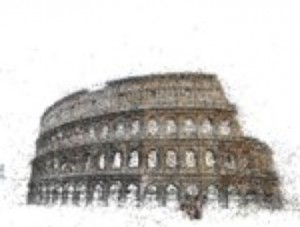 NSF’s bi-weekly “CS Bits & Bytes” featured UW CSE’s “Rome in a Day” project back in December. (An email version went out then, but the web version only just became available due to a snafu.)
NSF’s bi-weekly “CS Bits & Bytes” featured UW CSE’s “Rome in a Day” project back in December. (An email version went out then, but the web version only just became available due to a snafu.)
“The University of Washington team, with the help of NSF funding, has been able to create a computer program that includes a “parallel matching” system that can match massive collections of images very quickly to create 3D reconstructions. The team ran 150,000 images from Flicker.com associated with the tags “Rome” or “Roma” through their matching algorithm, and the images organized themselves into a number of groups that corresponded to major landmarks. In one example, the computer analysis was able to take 2,106 photos of the Colosseum in Rome, map nearly one million points on those images, and reconstruct a 3D image of the Colosseum. Other 3D images reconstructed included Trevi Fountain, the Pantheon, and St. Peter’s Basilica. This computer matching and reconstruction from Rome took a total of 21 computer hours and near 500 computer cores, or central processing units. In addition to Rome, the project reconstructed 3D models of landmarks in Venice, Italy and Dubrovnik, Croatia.”
Read the post and watch videos here.

